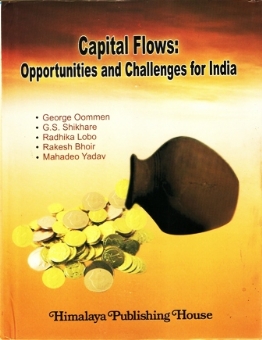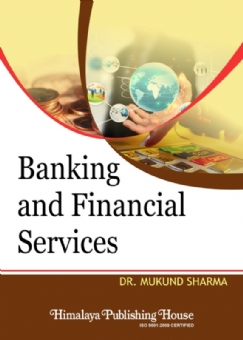The 1990s witnessed an upsurge in international capital flows the world over. This was a consequence of several factors such as financial liberalization and innovations, spread of information technology and proliferation of institutional investors. India too liberalized its external sector during the same time period and quite evidently has experienced a rise in its capital flows, both inward and outward. Such developments have had a multitude of effects namely: providing challenges to the monetary and exchange rate management mechanisms, the components of capital flow have been changing requiring caution and prudence by policy makers, new sources and destinations of capital flows have emerged on account of bilateral and regional trade agreements and finally there is an impact on the pace and direction of India’s economic growth.
Though capital flows are generally seen to be beneficial to an economy, a large surge over a short span of time can be a source of stress, leading to upward pressure on the exchange rate, overheating of the economy and possible asset price bubbles.. In India, capital flows in the past few years increased sharply and have been well above the current account deficit, which has largely remained modest. This has posed new challenges for monetary and exchange rate management.
Capital inflows have undergone a compositional shift from predominantly official and private debt flows to non-debt-creating flows in the post-reform period. Private debt flows have begun to increase again in the more recent period. The country-wise figures for FDI reveal that Mauritius in the leading position followed by Singapore, Japan, US and UK. The sectors that attract the maximum amounts of FDI are the services sector (financial and non-financial) including the telecommunications sector. Portfolio investment flows from industrial countries have become increasingly important in recent years in India. The sources of these FII flows are varied. The FIIs registered with SEBI come from as many as 28 countries. The banking, capital goods, oil refineries, cement and infrastructure sectors could be under pressure owing to inflationary pressure, higher interest rate regime and higher crude prices and under-recoveries and hence may not attract adequate FII.
Up to 1991, Indian capital outflow was tightly regulated to conserve the limited domestic saving for investment at home; it was allowed mostly in joint ventures in third world countries, mainly as a means to export capital goods, and in industries in which India has attained fair amount of technical capability — mainly in light engineering, and textiles. As India liberalized its rules for inward FDI, restrictions on the outward flow also got loosened. In the present decade that there is a sharp surge in capital outflows into developed economies, mainly by mergers and acquisitions (M&A), mostly in advanced manufacturing, and IT and ITES. There are also investments in acquiring firms dealing with industrial raw material, mostly in oil exploration and extraction — principally by public sector entities. Similarly, outbound FII is also gaining a lot of ground. Indian entrepreneurs and investors have tremendous opportunities what with on the one hand India Opening the capital account and on the other new areas for investment opening up in developing and developed countries.
Contents :
1. Regulatory Aspects Concerning Capital Inflow in India – Sanjay P. Parab
2. Trends in Capital Flows to Indian Economy: Opportunities and Challenges – Prof. K.D. Landge
3. Volatile Capital Flows: Challenges for Indian Economy – Dr. Asavari. Bapat
4. Capital Flows in India – An Overlook – Prof. Mahesh Madhukar Patil, Prof. Neelam Shaikh and Prof. Nitin Bhaskar Pagi
5. Sector-wise Foreign Investment in India – Dr. Kiran H. Mane and Prof. Sachin D. Bansode
6. Foreign Direct Investments in India and its Sector-wise Distribution – Prof. Kishor- P. Kadam and Prof. Dinkar P. Takle
7. Capital Inflows: Sectoral Analysis – Prof. Sunil Ratnakar Sonawane
8. Trends in Capital Inflows: Source, Components and Sectors – Prof. Pramod Dagade, Prof. Raj Soshte and Prof. Avinash W. Ingole
9. Sector-wise Pattern of Capital Flows in India – Prof. Mundhe Fahirn Ibrahim
10. A Critical Analysis of FDI in Retail in India – Dr. Avinash B. Shendre and Miss Rupali Deolekar
11. Foreign Direct Investment in India’s Retail Trading – Opportunities and Challenges – Prof, Ashwin P. Bhinde
12. A Descriptive Study on FDI in Retail in India – Opportunities and Challenges – Prof. Sunil B. Lalchandani and Prof. Kesar S. Lalchandani
13. FDI – Retail Industry in India – Prof. Madhu Shukrey
14. FDI in Indian Retail Sector: An Analysis of Competition in Agri-food Sector – Prof. Vilas Gaikar, Prof. Kiran Menghani and Prof. Sharmila D. Karve
15. FDI in Telecommunication Since 1991 – Prof. Ajaykumar Pillai
16. FDI in Higher Education: Challenges and Opportunities for India – Durgesh Kumar Dubey and Anil Tiwari
17. Transition in Cambodia and Lao PDR: Opportunities for FDI Flows from India – Dr. Radhika Lobo
18. Capital Flows in India: Trends and Issues – Prof. Elizabeth Rosen
19. Capital Inflows: Problems of Investing in India – A Comparison between India and China – Usha P. Oomman
20. Trends in Foreign Investment Inflows: An Analysis – Mr. Maurya Rambalir
21. The Comparative Study of Stock of Inward and Outward of FDI in India and China – Prof. Rakesh Bhoir, Mr. Dayare Sanjay R. and Dr. Mahadeo Yadavv
22. Foreign Capital: Technology Transfer and Spillover Effect – Prof. G.S. Shikharev
23. Impacts of Capital Flow and Capital Over Flow on the Economic Development of a Country – Dr. Ganesh N. Bokare
24. Foreign Direct Investment: Its Trends and Impact on Indian Economy – Prof. Mhatre Nilesh S, and Prof. Gaikar Vilas B.
25. Impact of Foreign Direct Investment on Economic Development – Mrs. Nitisha M. Gome and Mrs. Manisha R. Samant
26. Capital Flows and Its Impact on India – Prof. Mrs. Moni Alex
27 Foreign Capital Flow and Indian Economy – Dr. Megha G. Lohiya
28. Trends and Implications of FDI in India – Prof. Karande S. B.
29. CapitaUFlows: Impact on the India’s Economic Growth after 1991 – Prof. Ankit Agrawal
30. Capital Flows: Impact on the India’s Economic Growth – Dr. R.S. Mhatre
31. Role of FIIs in Indian Stock Markets – Prof. C.A. Reshmi M. Gurnani
32. Capital Inflow and Inequality Future – Prof. Bokare Katnaji
33. Capital Flows: Impact on India’s Economic Growth – Mr. Morey D.N. and Ms. A. Kakde
34. Political Economy of FDI in Retail Marketing of Indian Agriculture: Myth and Reality – Mr. Gosavi Sunil, Prof. Mahamuni Vijaykumar V. and Prof. Gosavi Ram
35. Political Views on FDI in India – Prof B.S. Kharat
36. How Advantageous is FDI to India? – C.A C.D. Phadke
37. FDI: An Overview – Mr. Santosh S. Pawar and Mr. Lalchandra R. Sante
38. Issues in Global Economy, Commerce and Management: Challenges and Strategies for International Competitiveness – Mr. Manojkumar G. Lohiya
39. An Analysis of FDI Outflows from India – Dr. Nishikant Jha, Ms. Priya Ramesh Jaiswal and Ms. Pooja Manoj Upadhyay
40. Study of FDI in India and its Impact – Dr. Nishikant Jha, TCSC
41. Challenges and Opportunities of Capita! Flow with Relation to Agricultural Sector (Impact on Indian Economic Growth) – Prof. Manish Rai






